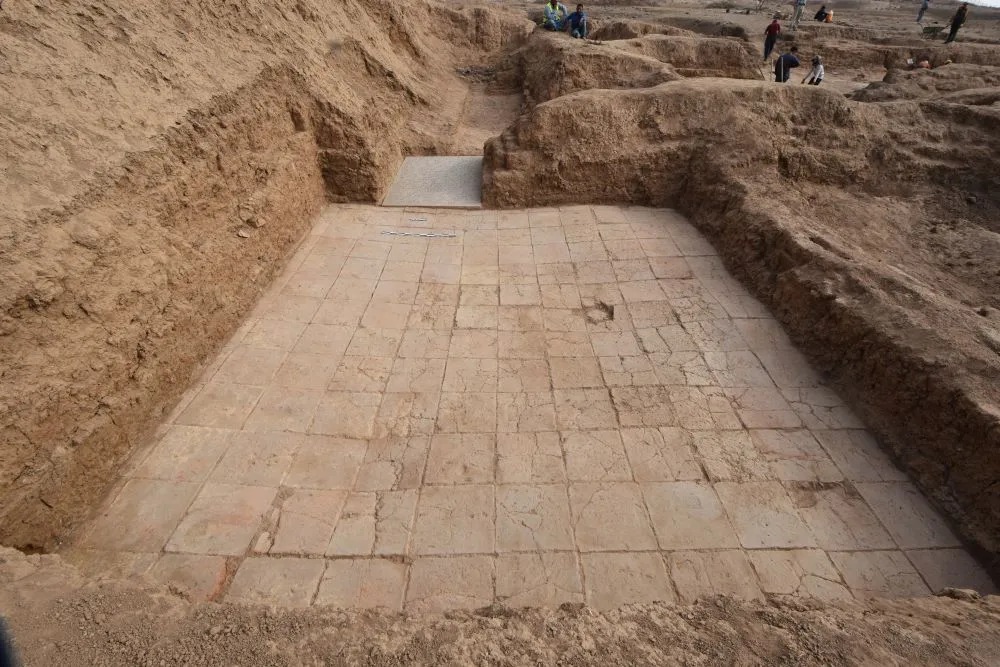Assyrian palace excavated in the ancient city of Nimrud

Shafaq News/ In the 1840s, British archaeologist Austen Henry Layard excavated the palace of the Assyrian king Adad-Nirari III (r. 810-783 BC) in the ancient city of Nimrud, in northern Iraq. Other Assyrian palaces were somewhat standardised, but the plans resulting from Layard’s dig were comparatively unusual. As the remains of the palace were inaccessible, buried under 2m of later debris, questions that had been raised about the layout of the building remained unanswered.
A floor of bricks stamped with inscriptions, uncovered in the Palace of Adad-Nirari III at Nimrud. Image: Michael Danti, Penn Museum
Recently, researchers from Penn Museum have teamed up with Iraqi archaeologists to excavate the site at Nimrud, which was sacked by Babylonians in the 7th century BC and targeted by so-called Islamic State in 2016. Michael Danti, director of Penn’s Iraq Heritage Stabilization Program, said, ‘It’s truly amazing to have the opportunity to solve these archaeological puzzles – excavating new areas of Nimrud and the trenches of Victorian-era antiquarians. Previous errors in documentation were compounded over the last 170 years with each publication about the palace.’ According to Danti, their finds – such as the typical Assyrian palace features of a lustration slab, perhaps used for ritual offerings or cleansing, and a ‘tram rail’ for moving a large brazier on a cart – show that Layard made mistakes and that ‘Adad-Nirari’s palace resembles those of his royal ancestors.’
Other finds from the palace include a large stone vase, a column base and capital, an inscribed stone box that would have held a door socket, inscribed fragments of ivory and of ostrich eggshell, and a floor of stamped bricks.
The palace may also have served as the residence of Queen Sammuramat, later known as Semiramis, the mother of Adad-Nirari who is said to have accompanied her son on military campaigns. As excavations continue, the team hope that evidence about this queen will come to light.
A joint excavation between archaeologists from Penn Museum and the University of Pisa has been exploring the Mesopotamian site of Lagash, further south in Iraq. Lagash was a thriving city in the 3rd millennium BC and archaeologists have been investigating the role of craft production in its economy, finding, since 2019, seven pottery kilns, vast quantities of ceramic fragments, as well as roads, alleyways, and two houses.
In the most recent season of fieldwork the team unearthed a large public eatery with a partial kitchen and an open-air dining area. Dating from 2700 BC, the hostelry was furnished with benches, an oven, and refrigeration. Archaeologists found remains of food as well, providing glimpses of the everyday lives of Lagash’s inhabitants, including many people who weren’t necessarily wealthy, but had some agency and independence, according to Holly Pittman, director of the project.
(The Past)